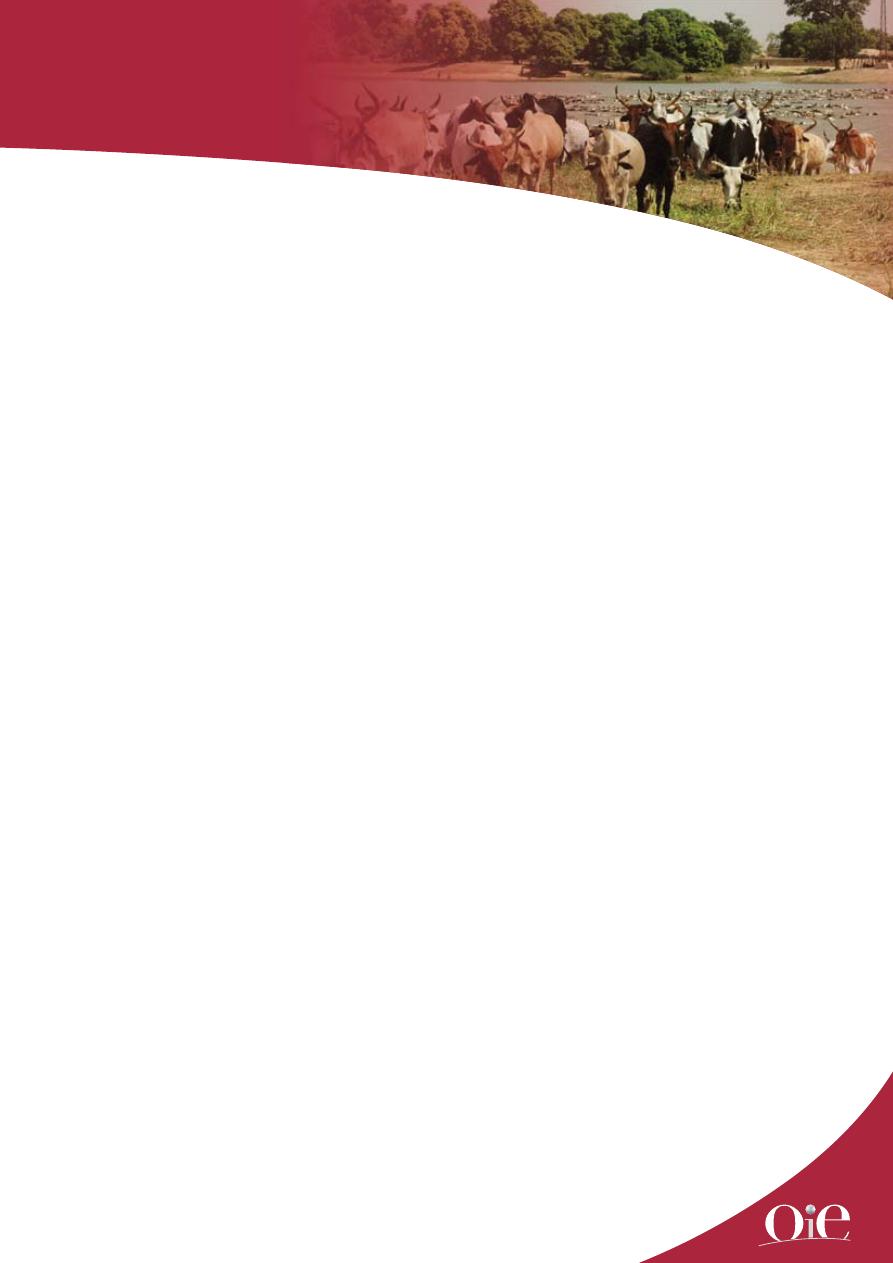
1
What is Foot and Mouth Disease (FMD)?
Foot and Mouth Disease (FMD) is a severe, highly contagious viral disease of livestock
with signifi cant economic impact. The disease affects cattle and swine as well as sheep,
goats, and other cloven-hoofed ruminants. All species of deer and antelope as well as
elephant, and giraffe are susceptible to FMD.
In a susceptible population, morbidity approaches 100%. Intensively reared animals
are more susceptible to the disease than traditional breeds. The disease is rarely fatal in
adult animals but there is often high mortality in young animals due to myocarditis or by
lack of milk when the dam is infected by the disease.
FMD is characterized by fever and blister-like sores on the tongue and lips, in the mouth,
on the teats and between the hooves. The disease causes severe production losses and
while the majority of affected animals recover, the disease often leaves them weakened
and debilitated.
The organism which causes FMD is an aphthovirus of the family Picornaviridae. There are
seven strains (A, O, C, SAT1, SAT2, SAT3, Asia1) each one requiring a specifi c vaccine
strain to provide immunity to a vaccinated animal.
FMD is a disease listed in the World Organization for Animal Health (OIE) Terrestrial
Animal Health Code and must be reported to the OIE (OIE Terrestrial Animal Health Code).
FMD is the fi rst disease for which the OIE established an offi cial list of free countries and
zones with or without vaccination.
Member Countries can also ask the OIE to offi cially recognise their national programmes
for FMD control.
Foot & Mouth disease
General Disease Information Sheets

2
Where is the disease found?
FMD is endemic in several parts of Asia, most
of Africa and the Middle East. In Latin America,
the majority of countries applied zoning and
are recognized free of FMD with or without
vaccination, and the disease remains endemic in
only a few countries.
Australia, New Zealand and Indonesia, Central
and North America and continental Western
Europe are currently free of FMD. However, FMD
can occur sporadically in typically free areas.
How is the disease transmitted
and spread?
FMD is found in all excretions and secretions from
an infected animal. The virus may be present in
milk and semen for up to 4 days before the animal
shows clinical signs of disease.
Animals that have recovered from infection may
serve as carriers of the virus.
Infected animals notably breathe out a large
amount of aerosolized virus, which can infect
other animals via the respiratory or oral routes.
The signifi cance of FMD is related to the ease of
virus spread through any or all of the following:
– new animals carrying the virus (saliva, milk,
semen, etc.) may introduce the disease to a
herd;
– contaminated pens, buildings or vehicles
used to house and move susceptible animals;
– contaminated materials such as hay, feed,
water, milk or biologics;
– people wearing contaminated clothes or
footwear, or using contaminated equipment;
– meat or animal products, raw or improperly
cooked food infected with the virus and fed to
susceptible animals, and;
– aerosol spread of virus from an infected
property via air currents.
What is the public health risk
associated with this disease?
FMD is not readily transmissible to humans.
What are the clinical
signs of the disease?
The severity of clinical signs will depend on the
strain of virus, the age and species of animal.
The signs can range from a mild infection to
severe. Clinical signs are more severe in cattle
and intensively reared pigs than in sheep and
goats.
General Disease Information Sheets
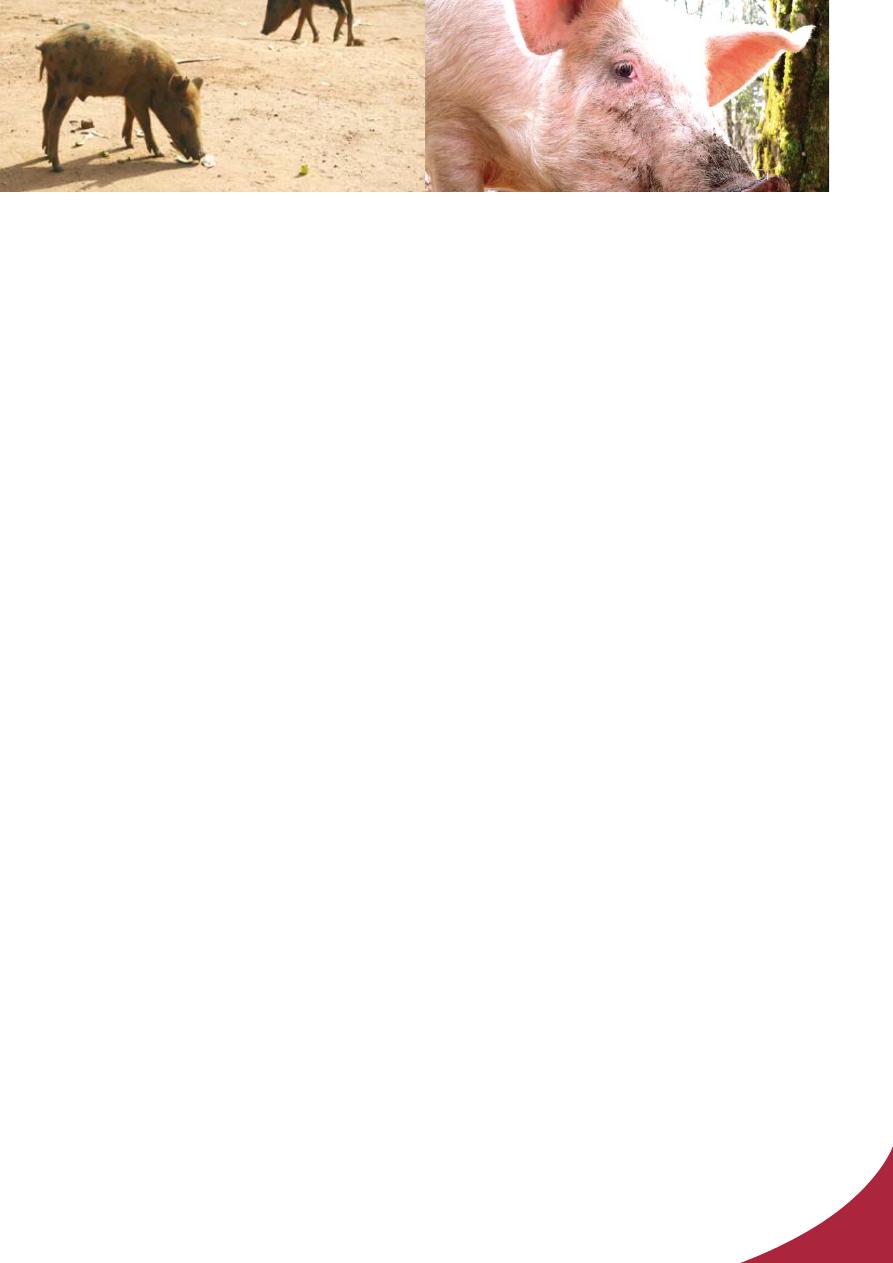
3
Foot & Mouth disease
The typical clinical sign is the occurrence of blisters
(or vesicles) on the nose, tongue, lips, oral cavity,
between the toes, above the hooves, teats and
pressure points on the skin. Ruptured blisters can
result in extreme lameness and reluctance to move
or eat. Secondary bacterial infection of open blisters
can also occur. Other symptoms often seen are
fever, depression, hypersalivation, loss of appetite
and weight, drop in milk production.
Health of young calves, lambs, kids, and piglets may
be compromised by lack of milk from infected dams.
If infected with the FMD virus, death can occur in
young animals before development of blisters due
to damage to the heart muscle caused by the virus.
Blisters usually heal within 7 days or longer,
however the impact of the disease on growth or milk
production rates may persist after recovery. Animals
that have recovered from infection may sometimes
carry the virus and initiate new outbreaks of disease.
More information on the disease can be found in the
OIE Technical Disease Card:
www.oie.int/en/animal-
health-in-the-world/technical-disease-cards/.
How is the disease diagnosed?
The disease may be suspected based on clinical
signs with confi rmation made through prescribed
laboratory tests (OIE Terrestrial Animal Health Code
and OIE Manual of Diagnostic Tests and Vaccines for
Terrestrial Animals).
What is being done to prevent
or control this disease?
Prevention and control measures
The initial measures in the global strategy for dealing
with FMD are early detection and warning systems
and prevention measures in place according to OIE
Guidelines for the Surveillance of Foot and Mouth
Disease (OIE Terrestrial Animal Health Code). This
contributes to monitoring the occurrence, prevalence
and characterisation of FMD viruses.
Protection of FMD free countries, areas or zones is
enhanced with stringent import and cross-border
animal movement controls and surveillance.
It is essential for livestock owners and producers
to maintain sound biosecurity practices to prevent
introduction/spread of the virus.
Measures that are recommended at the farm level
include:
– control over access to livestock by people and
equipment;
– control the introduction of new animals to
existing stock;
– maintain sanitation of livestock pens, buildings,
vehicles and equipment ;
– monitor and report illness;
– appropriate disposal of manure and dead
carcasses.
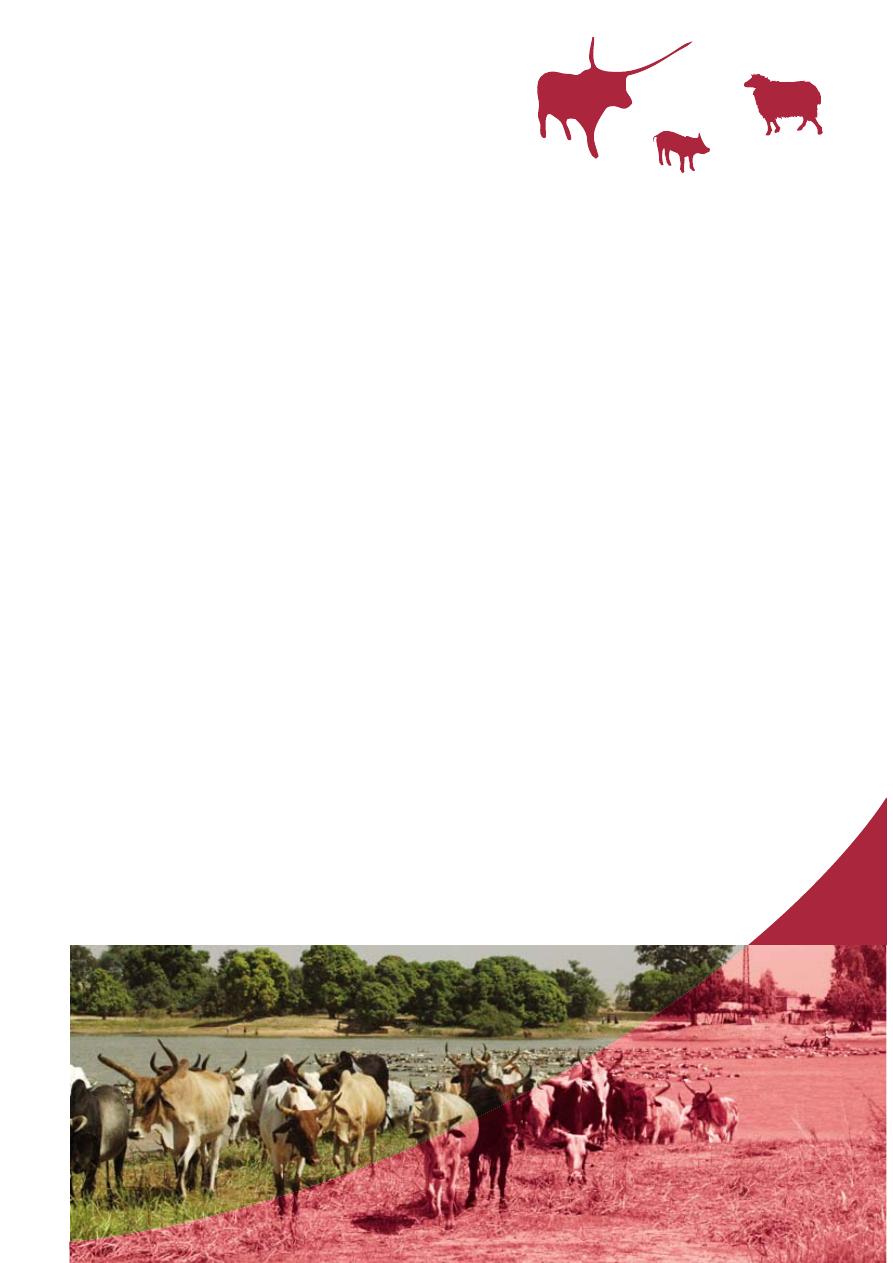
Foot & Mouth disease
Contingency planning for potential outbreaks will
identify the elements included in a response effort
to eradicate the disease, such as:
– humane destruction of all infected, recovered
and FMD-susceptible contact animals (OIE
Terrestrial Animal Health Code);
– appropriate disposal of carcasses and all animal
products (OIE Terrestrial Animal Health Code);
– surveillance and tracing of potentially infected
or exposed livestock;
– strict quarantine and controls on movement
of livestock, equipment, vehicles, and;
– thorough disinfection of premises and all
infected material (implements, cars,
clothes, etc.).
In endemic countries or zones, culling may be
complemented by vaccination for susceptible
livestock. Vaccines used must protect against the
particular virus strain prevalent in the area.
Disease-free Status
FMD is the fi rst disease for which the OIE established
an offi cial list of free countries and zones. The OIE
has defi
ned a transparent, science-based and
impartial procedure for the recognition of FMD
disease status of Member Countries and Territories
in their entirety or defi ned zones.
Categories for FMD disease status include:
– FMD free without using vaccination
(country or zone)
– FMD free with use of vaccination
(country or zone)
Details on the OIE process for recognition of FMD
disease status for a country or zone can be found
at:
www.oie.int/en/animal-health-in-the-world/offi cial-
disease-status/.
Member Countries can also ask the OIE to offi cially
recognise their national programmes for FMD
control.
4
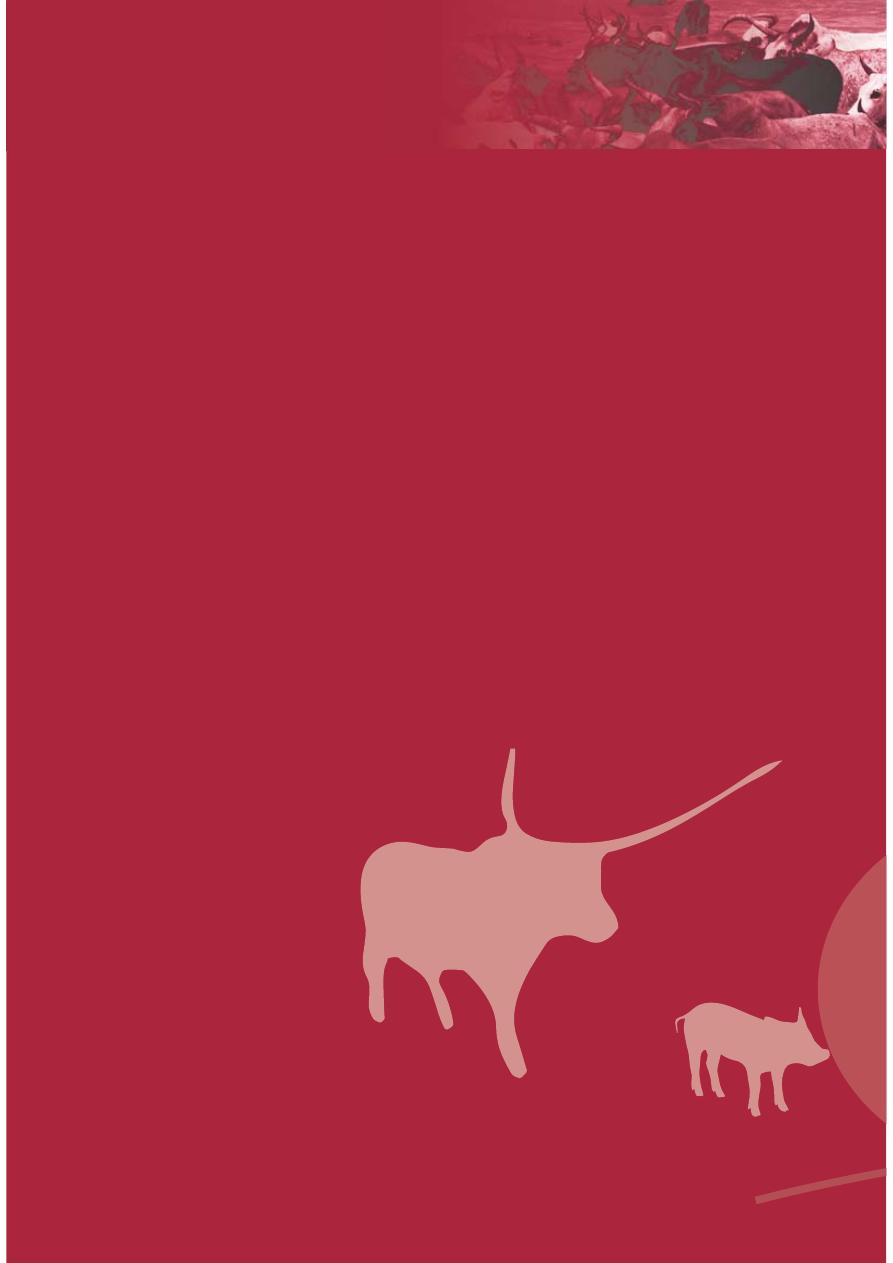
5
More Information?
General Disease Information Sheets
Ask our experts:
List of Reference Laboratories:
www.oie.int/en/our-scientifi c-
expertise/reference-laboratories/
List of Collaborating Centres:
www.oie.int/en/our-scientifi c-
expertise/collaborating-centres/
References:
1.
OIE Terrestrial Animal Health
Code:
standard-setting/terrestrial-code/
2.
OIE Manual of Diagnostic Tests
and Vaccines for Terrestrial
Animal:
terrestrial-manual/access-online/
3.
OIE Technical Disease Card:
4.
OIE web portal on FMD:
5.
The Center for Food Security
and Public Health, Iowa State
University
www.cfsph.iastate.edu/
6.
Merck Veterinary Manual:
www.merckvetmanual.com/
mvm/index.jsp?cfi le=htm/bc/
toc_50000.htm
7.
Atlas of Transboundary
Animal Diseases Animales
Transfronterizas
P. Fernandez, W. White;
Ed.: 2011
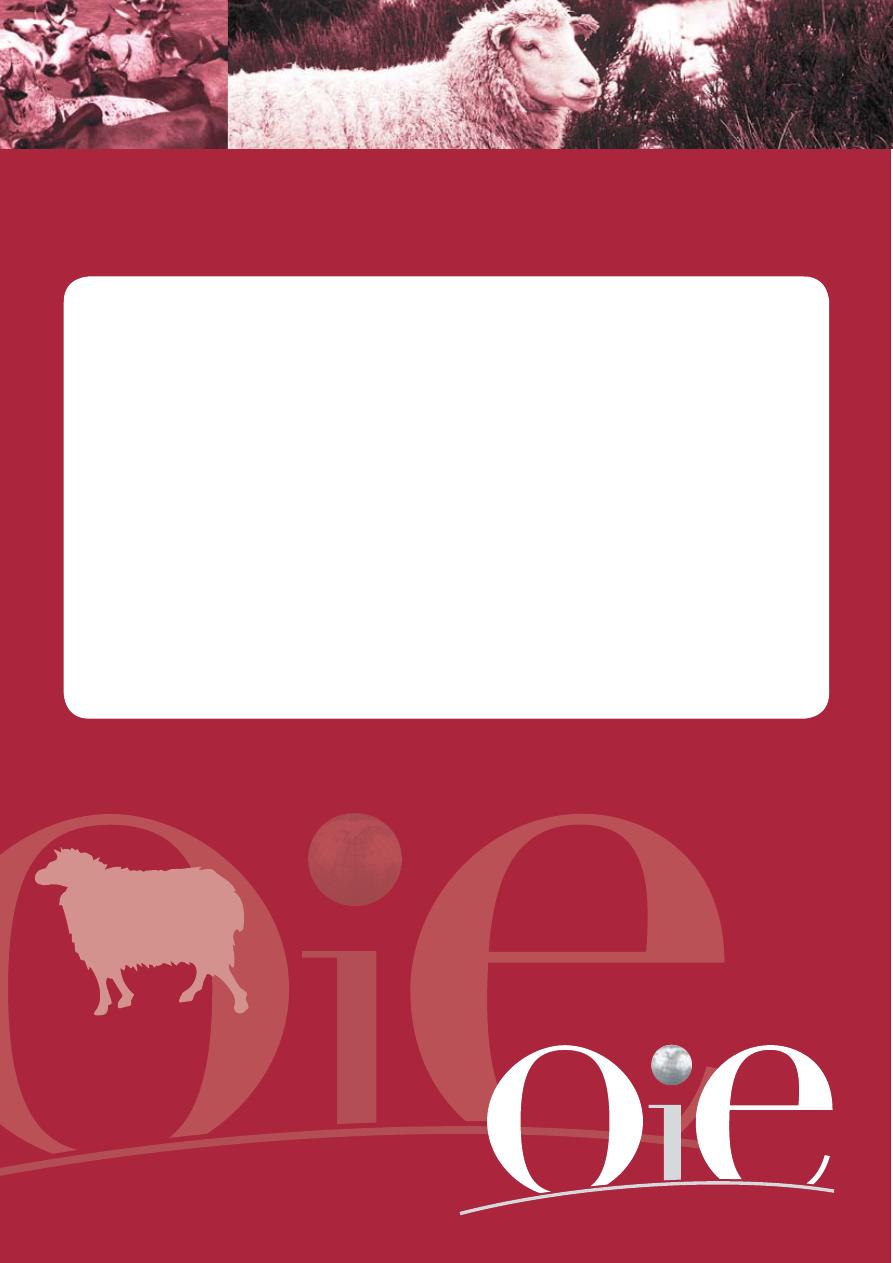
6
• 12, rue de prony • 75017 paris france
• tel. 33 (0)1 44 15 18 88 - fax 33 (0)1 42 67 09 87
• www.oie.int • oie@oie.int
Cover photo:
© N.Denormandie OIE.
Inside photos: © N.Denormandie OIE,
© M.Meuret INRA.
Key Facts
•
Since 1997, the Southeast Asia Foot
and Mouth Disease Campaign (SEAFMD)
coordinated through an OIE Regional
Coordination Unit in Bangkok has worked
to develop a regional approach to FMD
control. Cooperating countries include
Cambodia, Indonesia, Lao PDR, Malaysia,
Myanmar, the Philippines, Thailand, and
Vietnam.
•
On February 20, 2001 an outbreak of
FMD was confirmed in pigs in the United
Kingdom. A total of 2030 outbreaks
affecting sheep, cattle, goats and pigs were
reported until the situation was resolved in
September, 2001. Over 4 million animals
were slaughtered as part of the disease
control efforts.
•
In March, 2007, Argentina, Brazil and
Paraguay committed to intensive vigilance
for FMD in a shared zone encompassing
a small area along both sides of their
common borders. The agreement comes
as result of a joint evaluation mission by
renowned international and regional OIE
experts.
